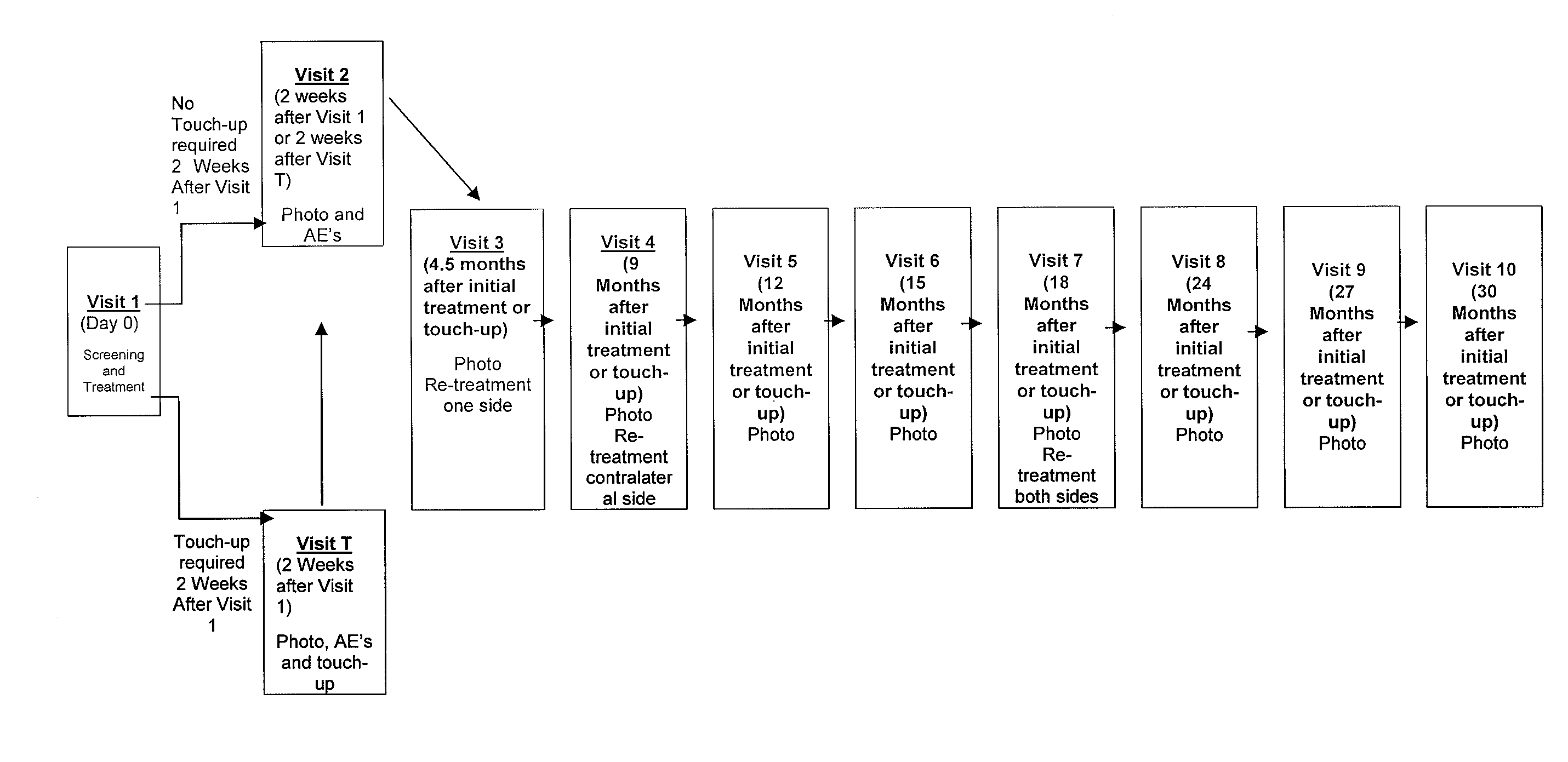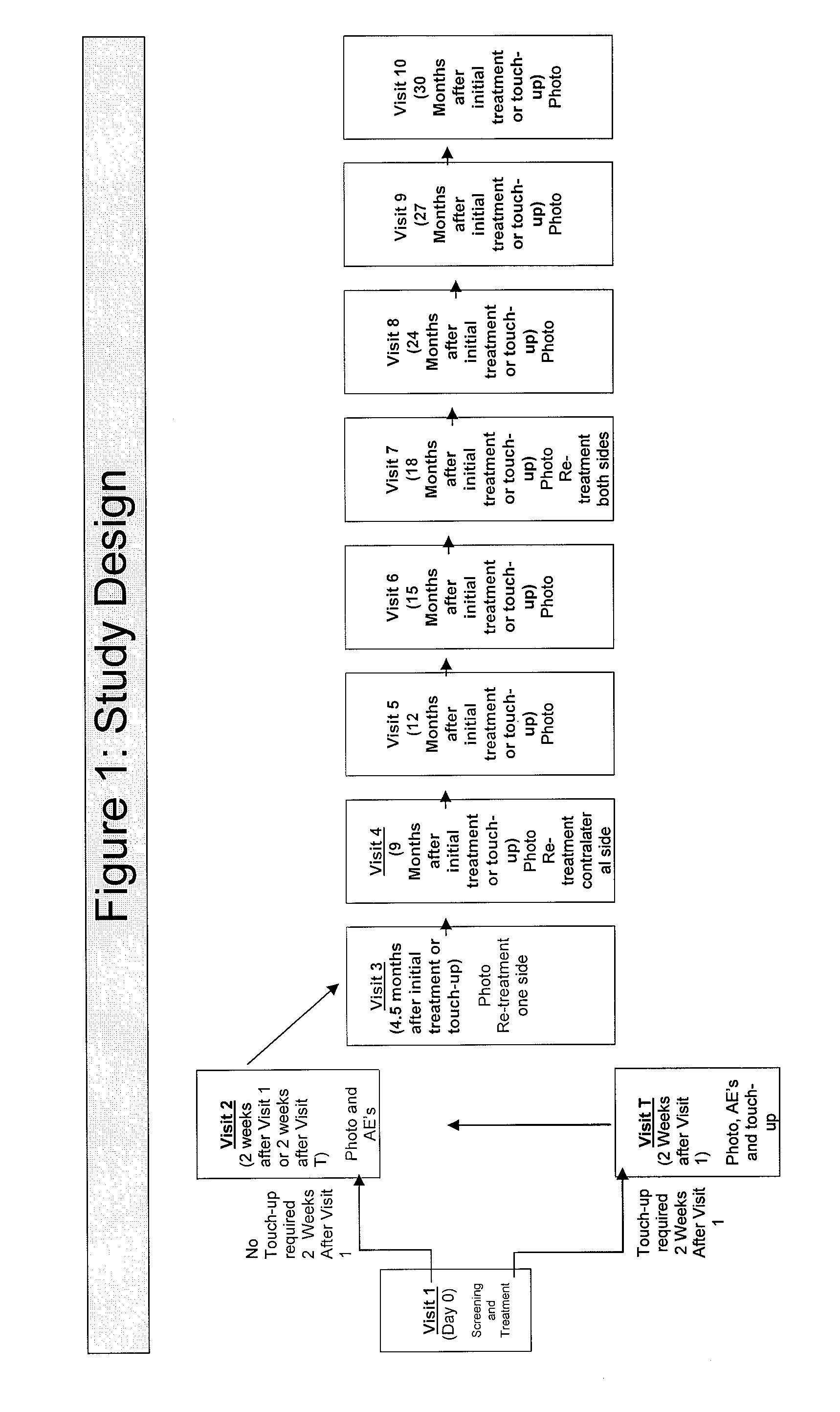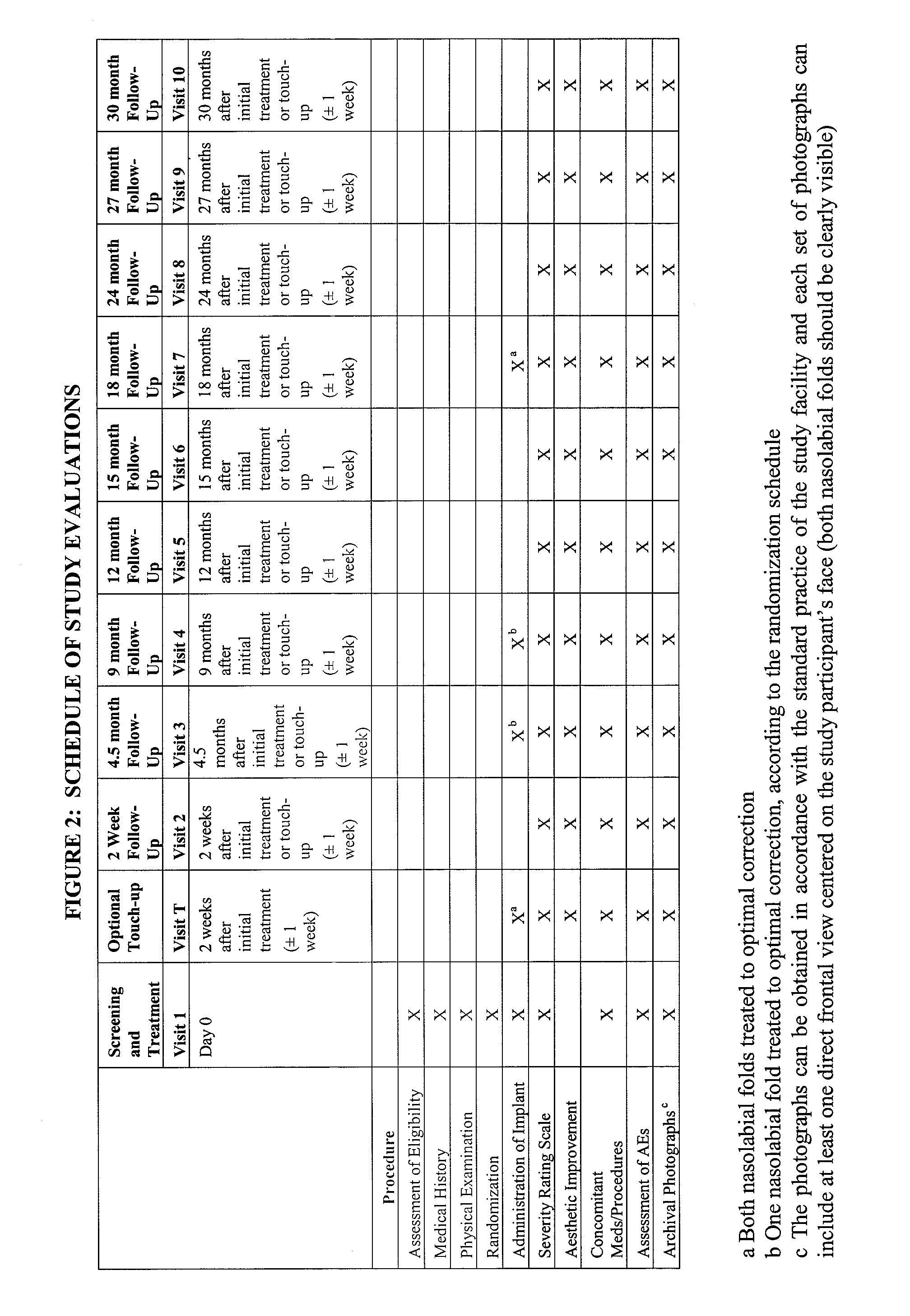Method of applying an injectable filler
a filler and injectable technology, applied in the field of injectable filler application, can solve the problems that the art has seen little in the way of development in regard, and achieve the effect of increasing the aesthetic benefit of implanted materials, maintaining and/or prolonging the efficacy of injectable filler composition
- Summary
- Abstract
- Description
- Claims
- Application Information
AI Technical Summary
Benefits of technology
Problems solved by technology
Method used
Image
Examples
example 1
Methods for Prolonging Dermal Filler Effect
[0120]This example illustrates a treatment protocol for maintaining injectable filler efficacy at least as long as one year after re-treatment.
[0121]In this example, a subject that desires added volume or firmness is treated with injectable filler. Touch-up with injectable filler can optionally be done within one to two weeks of the initial treatment. At 4½ months after the initial treatment, the subject is re-treated with injectable filler. One can assess differences in visual severity of the treatment area, for example, utilizing the 5-point scale Wrinkle Severity Rating Score (WSRS), at, for example, the initial visit, week two, 4½ months (before re-treatment), 9 months, 12 months, 15 months and 18 months. Re-treatment provides prolonged maintenance of treatment results. Aesthetic improvement can also be observed.
example 2
Persistence of RESTYLANE® Dermal Filler Effect
[0122]This example illustrates generally a study involving a treatment protocol to prolong RESTYLANE® dermal filler efficacy at least as long as one year after re-treatment.
[0123]The objective of the study outlined in this example was to evaluate the efficacy of RESTYLANE® dermal filler for the correction of nasolabial folds (NLF) and the effect of different re-treatment schedules to affect the persistence of a cosmetic improvement. Study findings demonstrated a duration of effect with RESTYLANE® dermal filler resulting from 4½ and 9 month re-treatment sessions (85 percent and 88 percent, respectively). Furthermore, with a re-treatment at 9 months, 97 percent of subjects maintained response at 18 months.
[0124]75 subjects were evaluated to test the effect of two different re-treatment schedules, in a split-face design. Each subject had both nasolabial folds corrected with RESTYLANE® dermal filler, one side of the face was randomly selecte...
example 3
Study Design for Comparing Re-Treatment at Different Timepoints
[0130]This example illustrates one possible design of a study for comparing re-treatment at different time points. As will be appreciated by one of skill in the art, the study can be repeated to examine various durations, injectable fillers, and other variables.
[0131]The objective of this example is to evaluate the efficacy of injectable fillers for the correction of nasolabial folds and the effect of the re-treatment schedule on the overall persistence of the implant. The primary objective is to evaluate the duration of efficacy of injectable fillers, after multiple treatments and at different time points, in regards to differences in visual severity of the nasolabial folds, as assessed by, for example, the Evaluating Investigator at different time points. The primary endpoint can be, for example, the scores in the Severity Rating Scale, obtained at visits. A secondary objective of the study in this example can include,...
PUM
| Property | Measurement | Unit |
|---|---|---|
| time | aaaaa | aaaaa |
| time | aaaaa | aaaaa |
| time | aaaaa | aaaaa |
Abstract
Description
Claims
Application Information
 Login to View More
Login to View More - R&D
- Intellectual Property
- Life Sciences
- Materials
- Tech Scout
- Unparalleled Data Quality
- Higher Quality Content
- 60% Fewer Hallucinations
Browse by: Latest US Patents, China's latest patents, Technical Efficacy Thesaurus, Application Domain, Technology Topic, Popular Technical Reports.
© 2025 PatSnap. All rights reserved.Legal|Privacy policy|Modern Slavery Act Transparency Statement|Sitemap|About US| Contact US: help@patsnap.com



